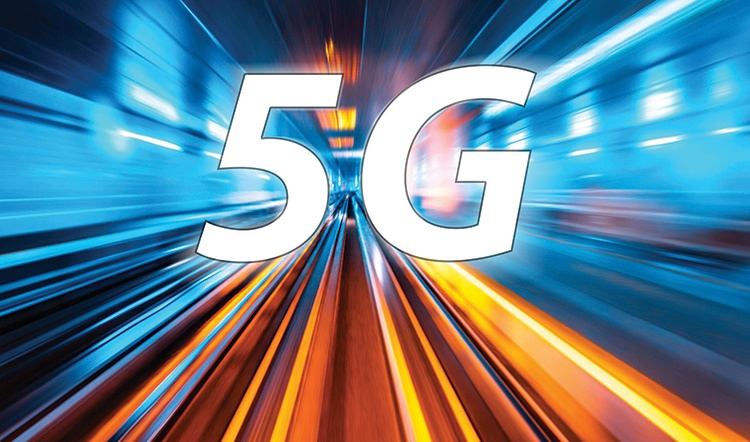Top technology trends for 2021
 |
| Denis Brunetti, President, Ericsson Vietnam, Myanmar, Laos, and Cambodia |
Digital workplaces
In general, employees have responded positively to the convenience of work-from-home life, but employers are also noticing the benefits – lower office rental and upkeep costs, for example. According to our Future of Enterprises report, 60 per cent of decision-makers are very satisfied with the ability to cut down on office space, with 43 per cent strongly believing they will have no office at all by 2030. Early indications also show remote workers are up to 40 per cent more productive than their in-office counterparts.
According to the global survey featured in our IndustryLab report exploring the dematerialised office and insights into the workplace by 2030, half of respondents indicated they would want a full-sense virtual presence at work from anywhere. It is generally agreed that the future of work is remote, and that ‘business as usual’ will never be as it once was.
Online learning
Digital workspaces and dematerialisation will not just benefit those in the workforce. At the peak of the pandemic, over 1.6 billion children in 195 countries around the globe were sent home as classrooms closed. Video conferencing tools, other digital services such as language learning apps, virtual tutoring, and e-learning software have all seen huge surges in demand. With quality education key to both the UN’s Sustainable Development Goals and the Human Development Index, there is no question that education must be well-resourced and accessible to all.
As we continue the important work to improve educational opportunities through technology, we need to ensure we are reducing, and not contributing to, inequality in education. While the extent to which e-learning continues once students return to their classrooms is yet to be seen, the necessity of connectivity for education has been made abundantly clear.
Telehealth
 |
The pandemic has shown the huge potential and real-world functionality of telehealth technologies as vital tools to help prevent the spread of viruses through tracking, testing and treating.
In a research innovation project launched in September 2020, Ericsson, Telia, and Sahlgrenska University Hospital in Sweden used AI to help monitor and manage the demand for healthcare resources, creating and refining advanced AI analysis and insight models for the planning and prediction of healthcare resources.
Ericsson, University Hospital Birmingham NHS Foundation Trust, and King’s College London also collaborated on the 5G Connected Ambulance – a groundbreaking new way to connect patients, ambulance workers, and remote medical experts in real time. This innovation enabled healthcare workers to perform the UK’s first remote diagnostic procedure over 5G, demonstrating its transformative potential to enable clinicians and paramedics to collaborate haptically, even when they are miles apart – and help patients even if they can’t get access to a hospital.
Telehealth also provided other game-changing ways to address the challenges of providing health services at home, through video conferencing, e-mail, telephone, or smartphone apps.
These advances have been particularly helpful for seniors. Recent insights from an Ericsson ConsumerLab study revealed that devices and the internet had helped 90 per cent of seniors during the pandemic. The benefits offered by technology are not limited to medical services either, but can be factors that can improve the overall quality of life through mobility, safety, and socialisation.
A 2020 study also concluded that the ongoing pandemic had forced important changes in the healthcare industry which may help to establish telehealth more firmly in the years to come.
Contactless convenience
Contactless tech defines the customer experience, from touch-free payments and ‘just walk out’ shopping to biometric check-in for travel and accommodation.
Even when shopping in-store, almost 90 per cent of shoppers in the US now claim to prefer touchless or self-checkout features. And with security always a high priority in an increasingly globalised world, facial recognition security systems are becoming more and more common.
These safe and undeniably convenient innovations have been made possible with more advanced processors and memory chips, better image sensors, smarter AI, and faster communications networks. Combine this with the expectation that VR and AR will fundamentally change our everyday lives, and we will start to see a true blend of the physical and digital.
We are seeing these trends emerging in Vietnam as we see them elsewhere. Are these innovations just a product of the pandemic or here to stay? I believe and agree with global experts that these trends will continue in the post-pandemic world.
What the stars mean:
★ Poor ★ ★ Promising ★★★ Good ★★★★ Very good ★★★★★ Exceptional
Themes: Digital Transformation
Related Contents
Latest News
More News
- Businesses ramp up production as year-end orders surge (December 30, 2025 | 10:05)
- Vietjet chairwoman awarded Labour Hero title (December 29, 2025 | 13:06)
- How to unlock ESG value through green innovation (December 29, 2025 | 10:03)
- AI reshapes media and advertising industry (December 29, 2025 | 08:33)
- FPT and GELEX sign deal to develop blockchain tech for global markets (December 29, 2025 | 08:29)
- Vietnam’s GDP forecast to grow by 9 per cent in 2026 (December 29, 2025 | 08:29)
- Women entrepreneurs are key to Vietnam’s economic growth (December 29, 2025 | 08:00)
- Vietnam's top 500 value-creating enterprises announced (December 27, 2025 | 08:00)
- The PAN Group shaping a better future with ESG strategy (December 26, 2025 | 09:00)
- Masan Consumer officially lists on HSX, marking the next phase of value creation (December 25, 2025 | 13:20)

 Tag:
Tag:



















 Mobile Version
Mobile Version